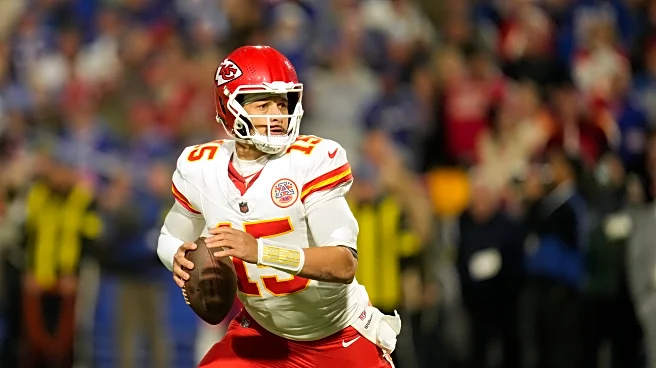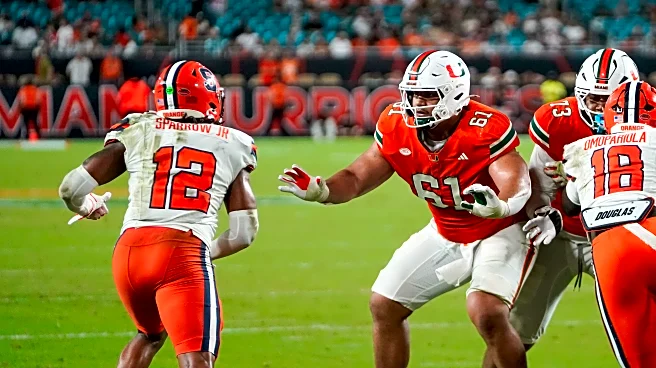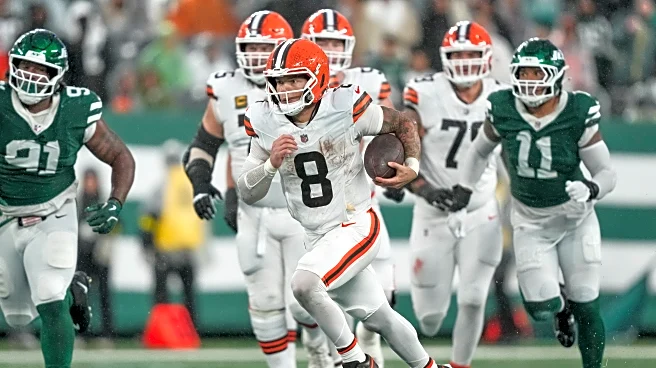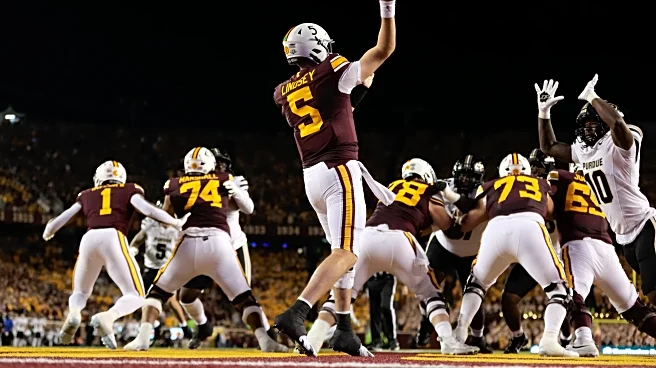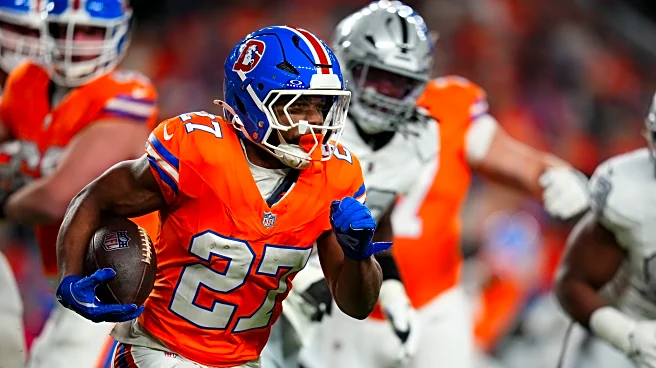What's Happening?
Troy Franklin, a second-year player from Oregon, is emerging as a key receiver for the Denver Broncos, surpassing Courtland Sutton in targets over the last four games. Franklin has received 37 targets compared
to Sutton's 26, averaging 9.3 targets per game. Despite a lower catch rate of 48.6% and an average of 43.8 yards per game, Franklin's increased snap share, reaching 79% and 74% in recent weeks, suggests a growing role. His positioning has shifted significantly, with 76% of his snaps now occurring outside, allowing Pat Bryant to focus on the slot position. This development indicates a potential change in the Broncos' receiving hierarchy.
Why It's Important?
The shift in target distribution and snap share within the Broncos' receiving corps could have significant implications for fantasy football players and the team's offensive strategy. Franklin's rise may affect Courtland Sutton's value in fantasy leagues, as well as the team's overall passing dynamics. If Franklin continues to receive a high volume of targets, he could become a more prominent figure in the Broncos' offense, potentially altering game plans and defensive strategies of opposing teams. This change could also impact the Broncos' performance in upcoming games, as they adapt to utilizing Franklin's strengths.
What's Next?
As Franklin's role continues to evolve, fantasy football managers may need to reassess their rosters, considering Franklin as a viable option. The Broncos' coaching staff will likely monitor Franklin's performance closely to determine if he can maintain his target volume and improve his catch rate. Opposing teams may adjust their defensive strategies to account for Franklin's increased presence on the field. Additionally, the Broncos may explore further adjustments in their receiver lineup to optimize their offensive output.
Beyond the Headlines
The emergence of Troy Franklin as a potential WR1 for the Broncos highlights the dynamic nature of NFL team strategies and player development. It underscores the importance of adaptability in professional sports, where player roles can shift rapidly based on performance metrics and team needs. This development also reflects broader trends in the NFL, where younger players are increasingly stepping into significant roles, challenging established veterans and reshaping team dynamics.


